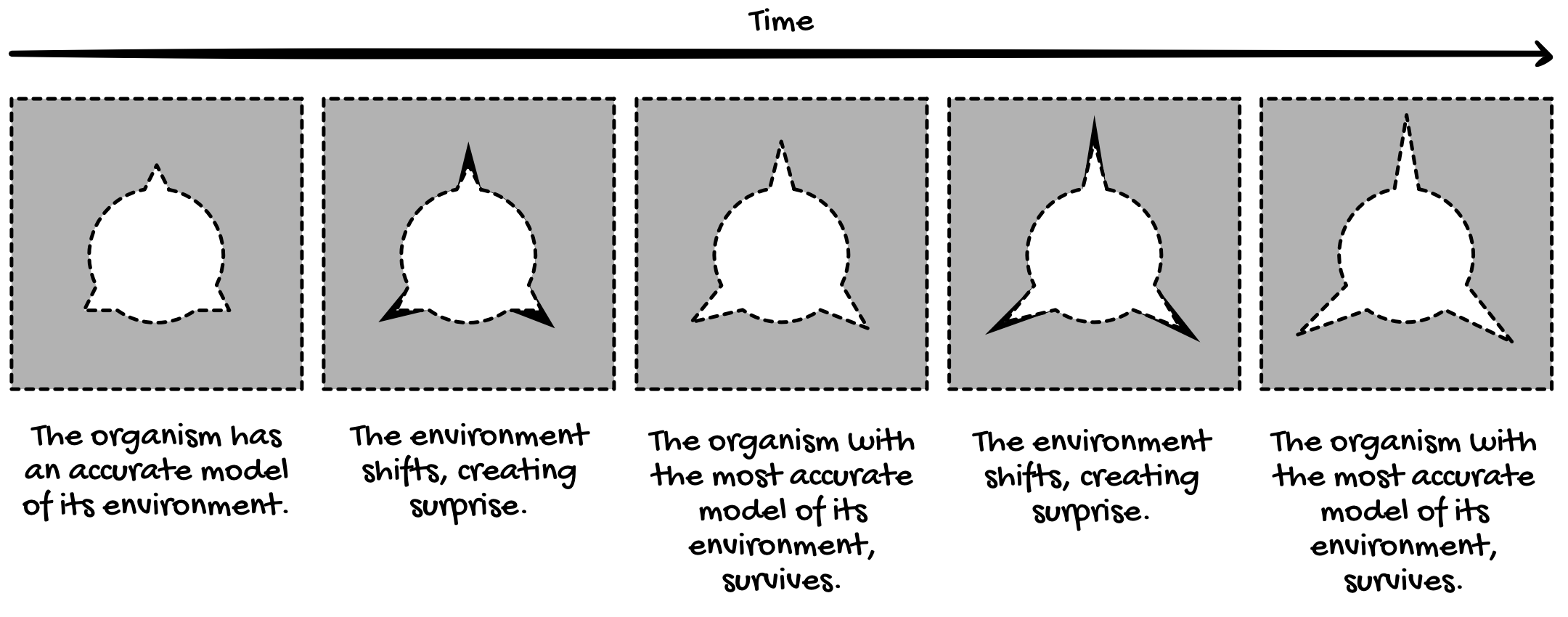"How does it explain Darwin's?" Zac asked.
"Very simply, actually. Let's assume we have two sets of parents. When the parents mate, the child inherits their genetic beliefs. In this case, Child A inherits the belief 'I am a circle,' whereas Child B inherits the belief 'I am a circle, with three spikes.'"

"Now, let's place both children in their environment."

"As you can see, when Child A is placed in the environment, there is a gap between Who She Is and Who The Environment Is. She doesn't have an accurate mathematical model of her environment, so she ends up in a surprising high-entropy state and dies."
"Like, how?" Zac asked. "What does that mean in a practical sense?"
"Well, if you pretend we are looking at cats here, Cat A might not have associated snakes with death. She goes up to the snake to play, gets bitten, and enters the ultimate high-entropy state: death. Cat B, on the other hand, has a more accurate model of her environment because she has inherited the belief that snakes cause entropy. When she sees a snake, she runs away and survives.
This adaptive trait allows her to reproduce and pass on that belief to her offspring. The more a trait is repeated, the more deeply ingrained it becomes in the Cat blueprint — and all cats would presumably inherit from the Cat blueprint. Therefore, the most adaptive surprise-minimizing habitual beliefs turn into deep, subconscious instincts.
As you can see, the system is always shifting around and creating surprise. As one organism adapts to its environment, another organism mutates and shifts the landscape. The organism with the most accurate mathematical model of its environment is the one that resists entropy and passes its own model onto its children."

"This algorithm even deduces that a long-tongued moth would have evolved alongside an orchid with a long nectary. As the nectary becomes longer, only the moths who believe they have long tongues can reach inside. Therefore, the long tongues minimize surprise in the system."

"Furthermore," I continued, "Darwin theorized that evolution happens through random mutations. We already know true randomness can't be defended from first principles. Therefore, it's just deeply hidden order. If the entire system is designed to minimize surprise, then each mutation would be deliberately placed to restore homeostasis. It's not random — it's math. We exist in our current form today due to intelligent design, brought about by evolution."
"That's pretty cool," Zac said.

